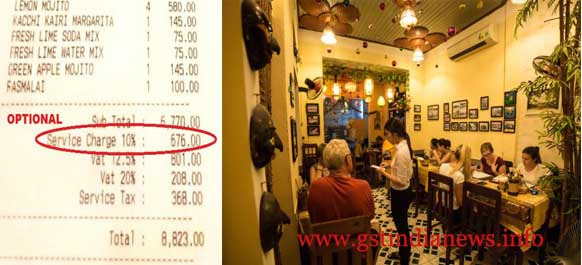
GST on hotel and restaurant services: Are hotels and restaurants charge you for service Tax under GST Regime?
 Well, your answer will be yes!
Well, your answer will be yes!
Because Most hotels and restaurants charge you additional service charges besides your food and drinks. Let us understand this concept of billing and GST on hotel and restaurant services.
Now the question is what is this service charge?
The answer is hotel and restaurant companies are coming under the Service category. Therefore, they charge you service tax for rendering these services. Similarly, they charge you for the items/food you order from them.
As a general consumer, you must be wondering why shall I pay the additional service charge?. Especially, when you already pay them for the food you order. The main question is :
Is it compulsory to pay Service charges according to GST law?
It is not compulsory to pay the service charge if you are not satisfied with the services. The government of India issued guidelines in April 2017 on fair trade practices. This is related to the charging of Service charges from the consumer by hotels/restaurants.
According, to these guidelines, Service Charge is optional and payment of such charge depends entirely upon the decision of the consumer. Therefore, as a consumer, if you think the hotel or restaurant should not charge you for the service charge then you can do the following.
If not what can you do as a consumer?
You can approach a consumer forum of appropriate jurisdiction for redressal If you are not happy with the services provided by the hotel or restaurant.
The above information was given by the Minister of State for Consumer Affairs, Food & Public Distribution, Shri C.R. Chaudhary in Lok Sabha today.
Related Links in GST
How to change the GST login password?
If you want to change your existing password because you forgot it then, there is an option on the GST portal to reset it. Read how to reset the GST login password.
What is Latest GST News?
Read the latest GST news and updates for April 2022. Also, there were a few notifications issued, that you must read. Read more about GST updates.
www.gst.gov.in dashboard home page
Read to know how to access the www.gst.gov.in website. Know the functionalities after login on to your dashboard. Know more about the www.gst.gov.in website.
How to search GST numbers by PAN?
Know how to search the GST number and verify the details of your customers and suppliers. Read to know more about GST number verIfication.

 Well, your answer will be yes!
Well, your answer will be yes!